Science & Technology
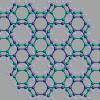 CU Boulder scientists have successfully synthesized graphyne, which has been theorized for decades but never successfully produced.
CU Boulder scientists have successfully synthesized graphyne, which has been theorized for decades but never successfully produced. CU Boulder will lead a five-year, $10 million National Science Foundation-funded initiative to reimagine cyberinfrastructure user support services and delivery to keep pace with the evolving needs of academic scientific researchers.
CU Boulder will lead a five-year, $10 million National Science Foundation-funded initiative to reimagine cyberinfrastructure user support services and delivery to keep pace with the evolving needs of academic scientific researchers. The global shortage of semiconductors—the computer chips that products such as smartphones, laptops, cars and even washing machines rely on—are motivating engineers to improve the inspection of the silicon wafers from which semiconductors are fabricated. To help, students have built a silicon wafer center-finding improvement device.
The global shortage of semiconductors—the computer chips that products such as smartphones, laptops, cars and even washing machines rely on—are motivating engineers to improve the inspection of the silicon wafers from which semiconductors are fabricated. To help, students have built a silicon wafer center-finding improvement device.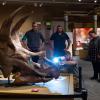 The fossil skull of a Triceratops has sat on display on campus since 1981. Now, the specimen is heading back to the Smithsonian Institution in Washington, where paleontologists will continue to study it to answer new questions about this fan-favorite dinosaur species.
The fossil skull of a Triceratops has sat on display on campus since 1981. Now, the specimen is heading back to the Smithsonian Institution in Washington, where paleontologists will continue to study it to answer new questions about this fan-favorite dinosaur species. Dan Larremore has won the Alan T. Waterman Award for his instrumental research on COVID-19 vaccine distribution and rapid testing. The prestigious award is the National Science Foundation’s highest honor for early-career scientists.
Dan Larremore has won the Alan T. Waterman Award for his instrumental research on COVID-19 vaccine distribution and rapid testing. The prestigious award is the National Science Foundation’s highest honor for early-career scientists. Seniors are working with Medtronic to design a soft robot that would give physicians more control as they examine the deepest part of a patient's lung and make the procedure less abrasive for the patient.
Seniors are working with Medtronic to design a soft robot that would give physicians more control as they examine the deepest part of a patient's lung and make the procedure less abrasive for the patient. Engineers have developed a new way to 3D-print liquid and solid materials together, potentially leading to more dynamic and useful products—from robots to wearable electronic devices.
Engineers have developed a new way to 3D-print liquid and solid materials together, potentially leading to more dynamic and useful products—from robots to wearable electronic devices.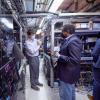 Three CU Boulder graduate students discuss the ins and outs of quantum physics—including how the field will help us send secret messages using unbreakable codes.
Three CU Boulder graduate students discuss the ins and outs of quantum physics—including how the field will help us send secret messages using unbreakable codes.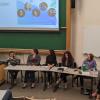 A recent panel discussion brought together individuals from both quantum research and the quantum industry. The female panelists discussed diversity issues in the field, the rich quantum ecosystem in Colorado and more.
A recent panel discussion brought together individuals from both quantum research and the quantum industry. The female panelists discussed diversity issues in the field, the rich quantum ecosystem in Colorado and more.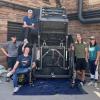 Students have created a device that makes the disposal of scrap metal safer and more efficient. The group completed the design as part of their Senior Design project sponsored by Accu-Precision, a Littleton-based manufacturer of custom parts for customers in aerospace and industrial sectors.
Students have created a device that makes the disposal of scrap metal safer and more efficient. The group completed the design as part of their Senior Design project sponsored by Accu-Precision, a Littleton-based manufacturer of custom parts for customers in aerospace and industrial sectors.


